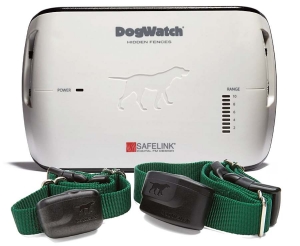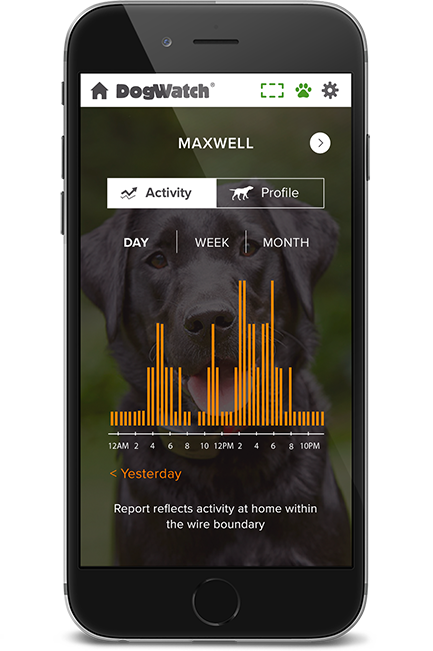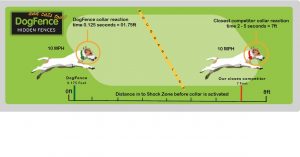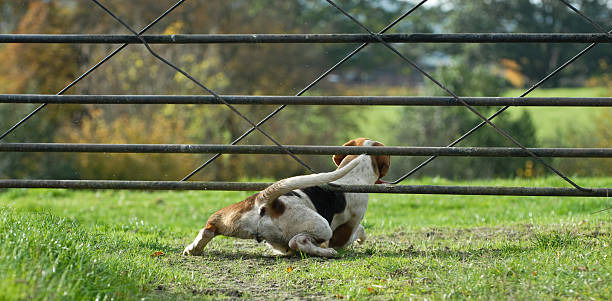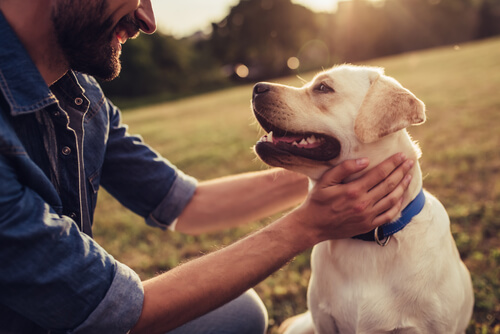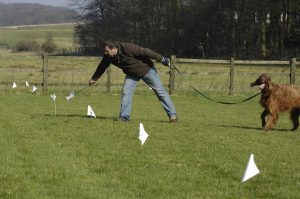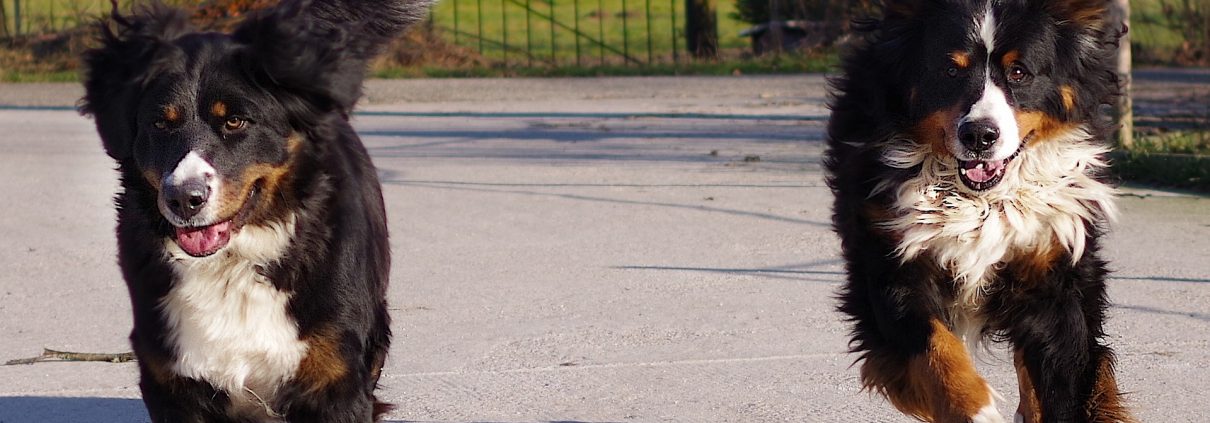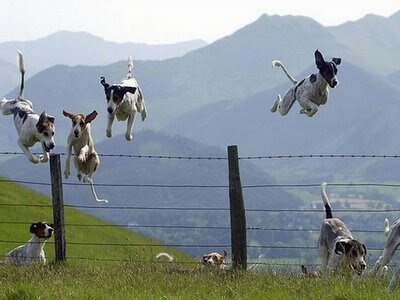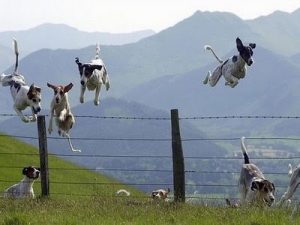Dog Fencing Ideas – how to keep Fido home!
Dog Fence Solutions: Rural vs Urban Challenges
Dogs will be dogs so exploring different dog fence solutions is a must for any canine owner. Having spent 17 years fencing dogs we have come across many different ideas. As with people no two dogs are the same and of course they all live in different locations.
Why Dogs Escape (and Why Fencing Matters)
Many rural locations are difficult to fence. Understandably this could be because of the terrain being very hilly, wooded or prohibitively large. Furthermore most rural properties are surrounded by hedgerows. Hedgerows may be a deterrent for a dog with a low prey drive but for many it’s an open avenue of escape.
Rural Dog Fence Options
What are the dog fence options for rural homes? Rural homes have always been difficult and expensive to fence and terrain and size will naturally affect what type of fencing can be installed.
Stock Fencing
Stock fencing is a traditional dog fence solution for rural properties. Used to contain livestock it is adaptable for use in rural gardens. For many dogs this will give enough of barrier to prevent the dog jumping out of the property. The downside is that this type of fencing is it is costly, unsightly and can be damaged by wildlife. Badgers and foxes will often make holes in this type of fencing and thus some rural owners find this dog fencing idea a temporary fix. Also the cost of such fencing can work out extremely expensive; starting around £8.00 p/m + gates etc it can a costly exercise.
Deer Fencing
Deer Fencing; again another great rural solution but sadly it is extremely obtrusive more expensive than stock fencing. Again, the downside with this fencing is that badgers and small mammals will make holes that then become an escape avenue for your dog!
Electronic dog fencing
Electronic dog fencing; you may not be familiar with this product even though this type of dog fencing idea has been around for over 40 years. Using a boundary wire, transmitter and a computer collar worn by the pet this type of fencing can be used on any terrain. Electronic dog fences do need to be professionally installed. This is because the pets need training but they a more cost effective solution than traditional methods. As a guide price an rural installation of approx 2 acres for 2 dogs would be circa £1300.00.
The advantage of this type of dog fencing solution is that it can be used cost effectively on very large properties (up to 350 acres) and can be removed if the owner moves house. It is also invisible so will not affect any planning restrictions or spoil the view!
Kennels and dog runs
Kennels and dog runs are full proof method for dog containment and are often an option for rural homes The downside of installing a run is that many dogs become bored and exercise is limited. The cost of installing Kennels can be high but equally these can be relocated to a new property.
Urban Dog Fence Options
When it comes to urban dog fencing there are certainly more options but prices are often prohibitively high. Of course, most urban gardens are fenced in some way but these may not all be dog proof! Some new sites have planning restrictions on fence heights and even open plan. Many properties use Picket or Rail type fencing which dogs can easily jump over or squeeze through.
Planning permission is not usually required in urban areas. Fences must be no more than 2m high or 1m high near roads. The most popular type of fencing is for urban houses is Close Board fencing.
Close Board Fencing
Close board fencing is a great dog fencing solution for many urban owners. It is generally tall enough to stop jumping dogs and quick to install. This type of fencing comes in varying heights and can be installed by most handymen. The downside is that some dogs will dig under and there may be restrictions to installing this type of fencing on some new estates. As a rough cost to install on a small rear garden it would be approx £1200.00.
Electronic dog fencing – no need to install gates!
As with the rural properties this type of fencing is a very cost effective solution. These types of dog fencing solutions also gives the owner the possibility of protecting the drive within the price. It is true that the larger the property for more cost effective the electronic dog fence becomes but small properties can also be fenced with this product.
Many owners may already have a Close Board or Picket fence installed and need additional backup. The electronic dog fence can be run around the existing fence if the traditional method is not working. Our Installers can place the cable to prevent the dog jumping over or digging under the existing fence. The cable can even be run under the drive to protect this area. Most owners are concerned that this means digging up the drive but the installation is both neat and discreet. A typical urban property would cost less £1000 to fence and this would include a driveway loop.
If you’re looking for affordable ways to secure your garden, check out our guide to cheap dog fence ideas.
Cat Runs
Interestingly cat runs can be used to keep both dogs and cats safe. These type of structures can prove expensive if they are professionally installed and may not be aesthetically pleasing. A cat run suitable for a dog would usually cost from £750.00 upwards depending on the size.
If you’re a cat owner too, our invisible cat fence systems provide the same safe, effective containment as our dog fences — keeping adventurous cats close to home without restricting their freedom.
Unusual DIY Attempts (What We’ve Seen Over the Years!)
A DogFence Ltd we have been Professionally installing electronic dog fences for over 17 years. The dog fencing solutions that some owners come up with to keep their pets at home can often be amusing. Over the years we have seen:
- Old Fireplaces in the hedge!
- Old garage doors down one boundary!
- Orange builders netting – not attractive or effective!
- Hundreds of dogs on tie out stakes – who have wound themselves up to the pole 🙁
- Electric horse fencing – Harsh and not fall proof!
If you would like to learn more about how we can keep your dog safe at home please call us or visit our web site. We offer bespoke Quotes using our online measuring tool – simple, accurate and effective. 01628 476475 or info@dogfence.co.uk



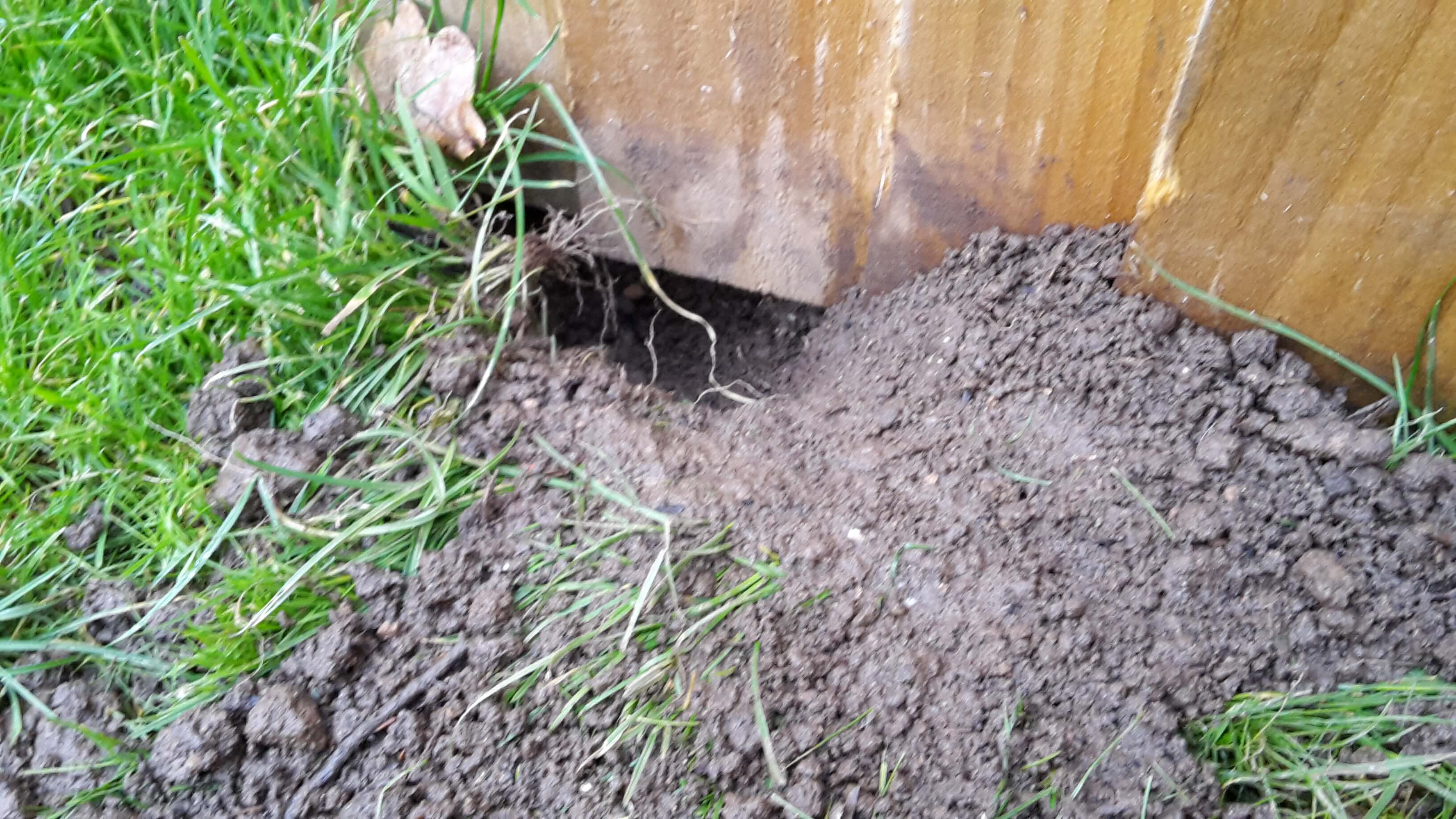

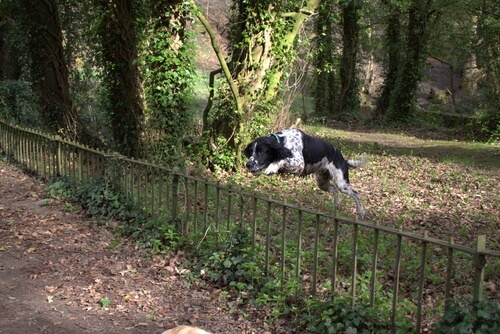
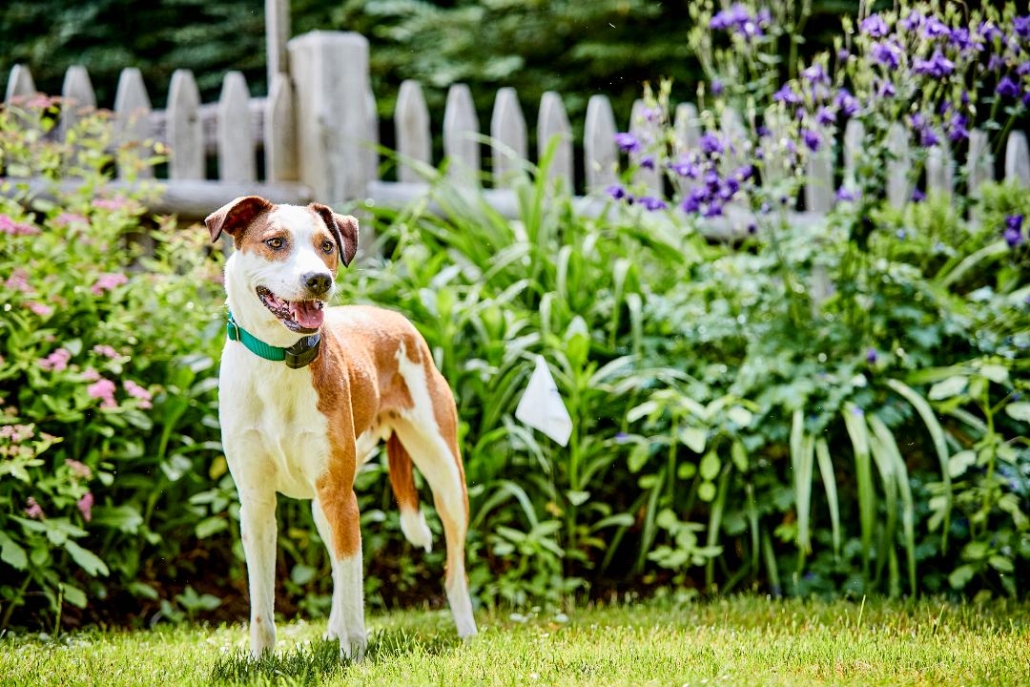


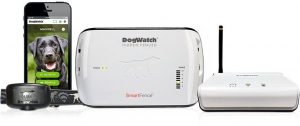

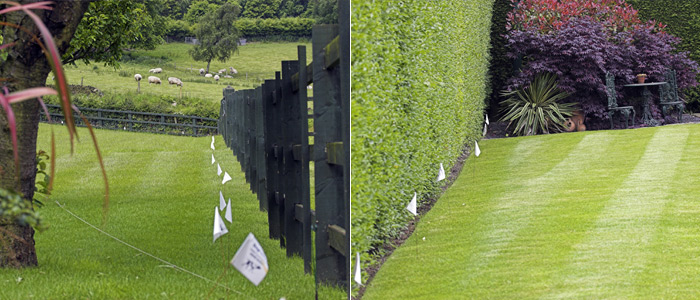
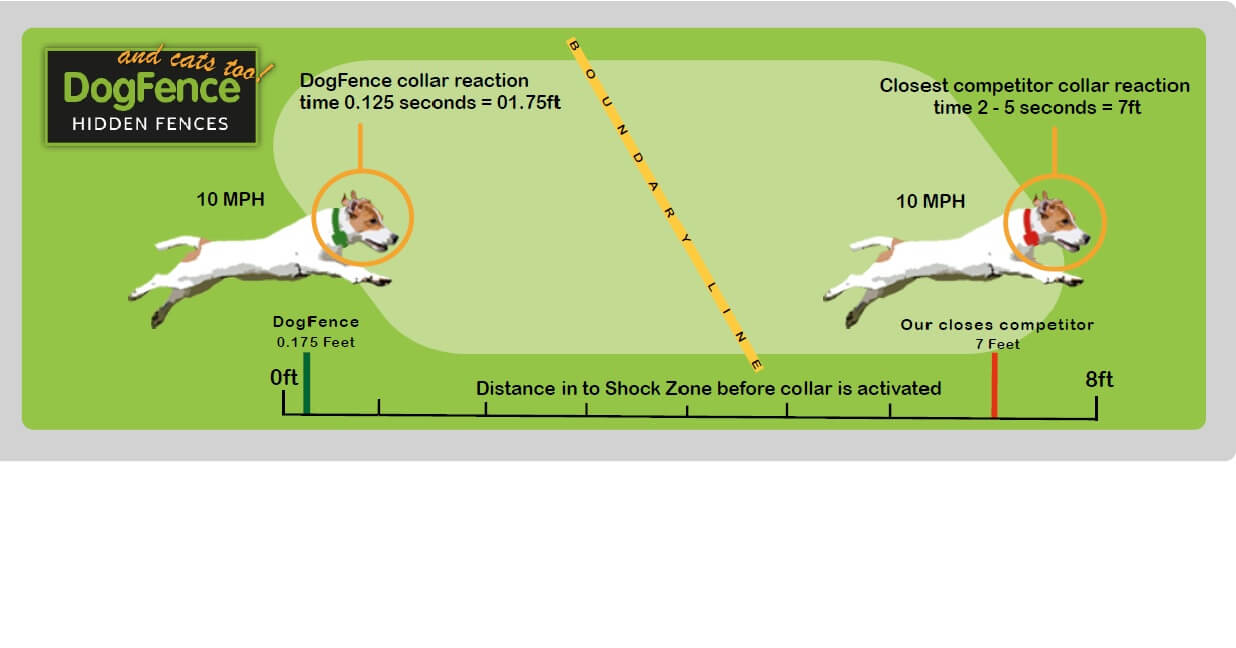 Response Hang‑On Time: Why Shutdown Speed Matters
Response Hang‑On Time: Why Shutdown Speed Matters
